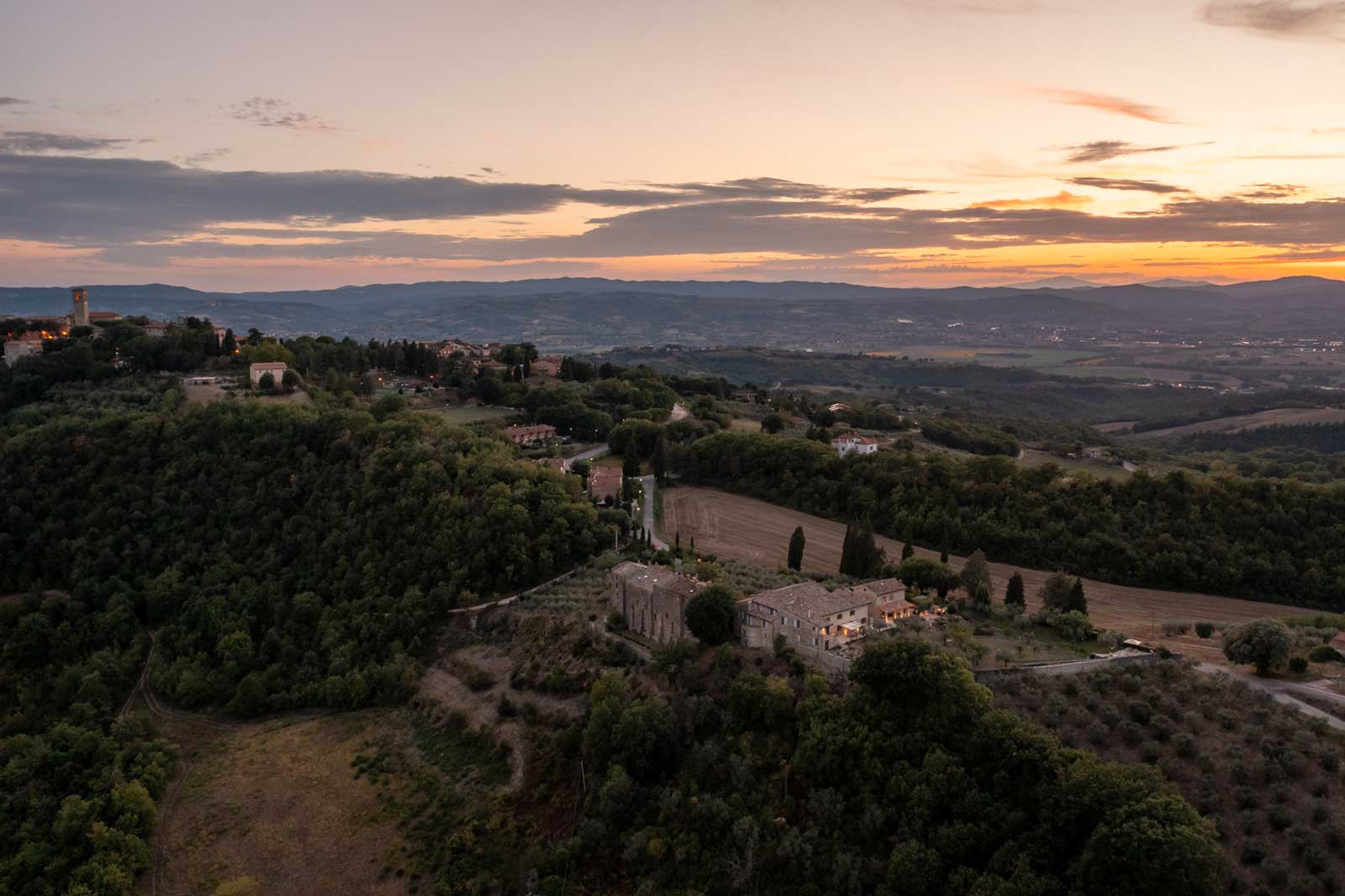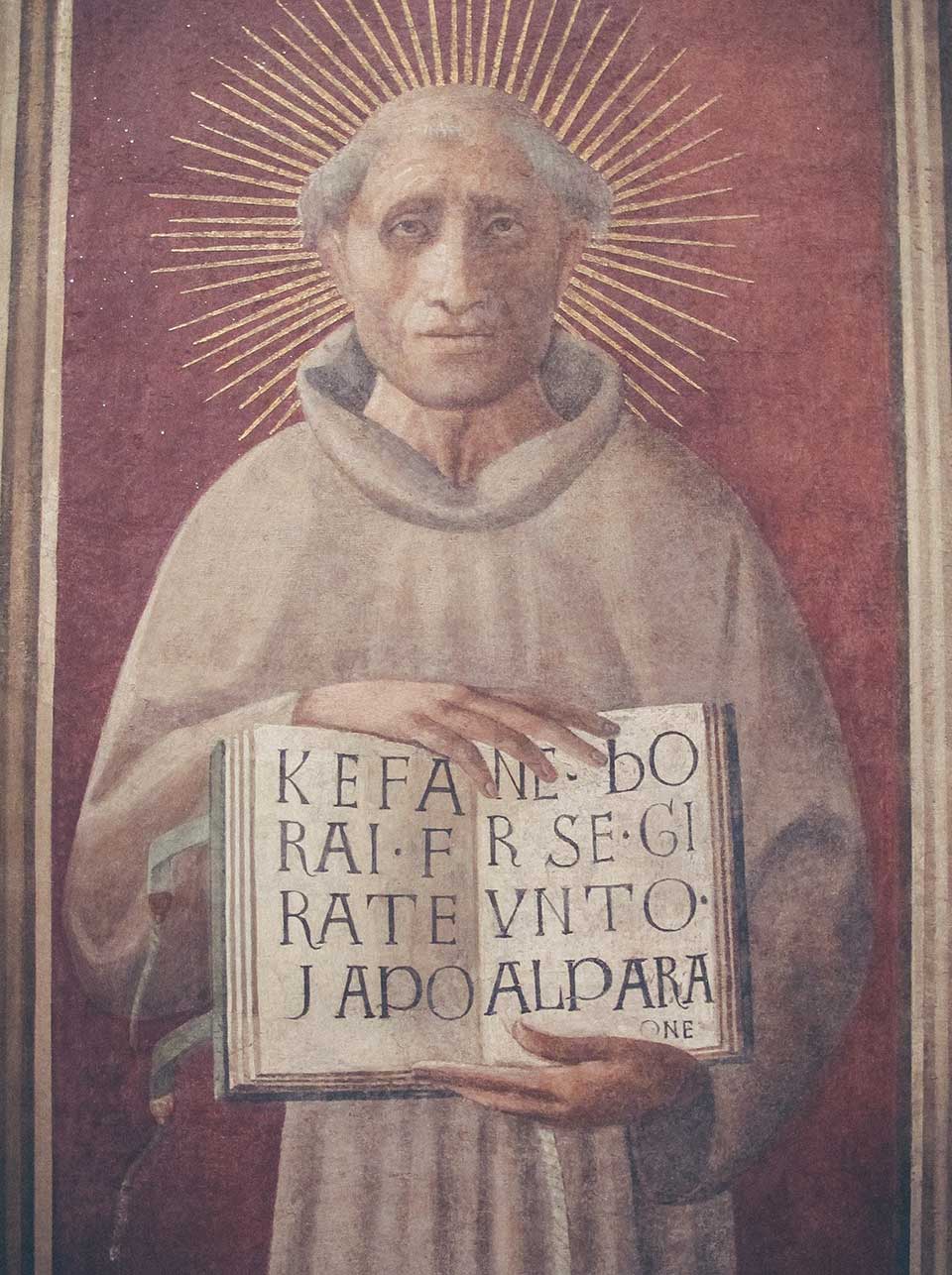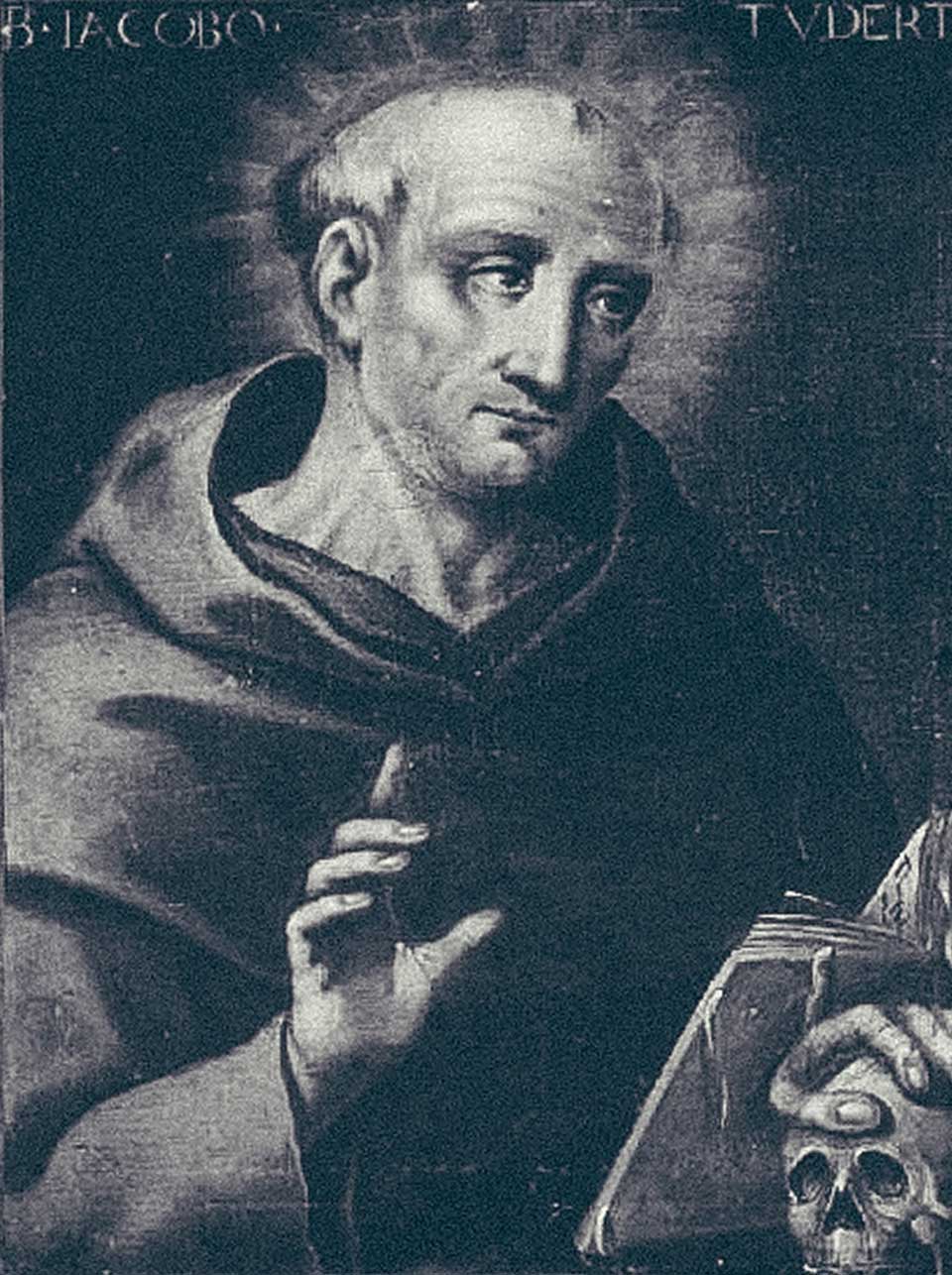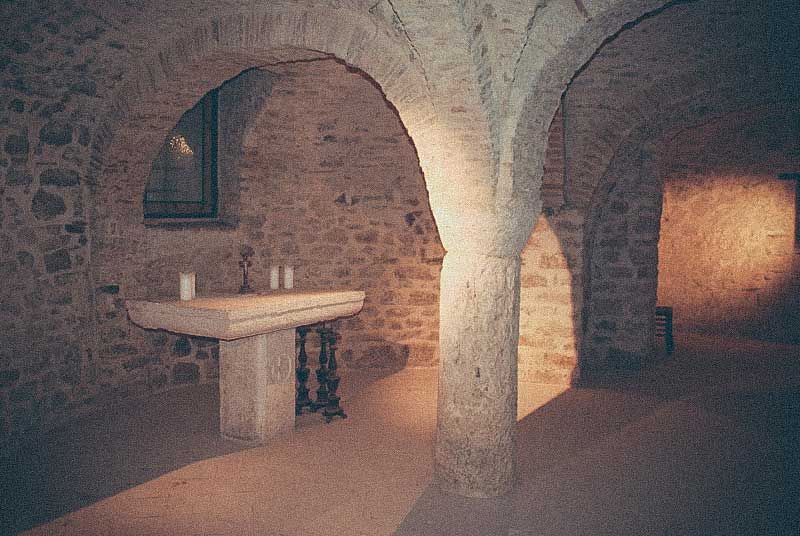History
The abbey of San Lorenzo, originally benedictine, is located on what is known as “San Giovanni’s hill”. The hill, on which an ancient church once stood, took its name from the famous order of the knights of San Giovanni also known as the Templar knights.
In 1235, the abbey was donated to the Franciscans and became a monastery for the nuns of the order of St-Clare – Le Clarisse. Beato Simone da Collazzone, a companion of Saint Francis of Assisi, witnessed the donation. His mother, Countess Matilde, lived in the monastery until her death in 1240. The church’s Romanesque-style crypt contains many of the characteristics of 10th and 11th-century architecture.
Of notice, the Monastery of San Lorenzo is where Jacopone da Todi sought refuge after his excommunication by Pope Bonifacio VIII and where he died on Christmas Eve of 1306.
In 1520 the monastery was the hideout for Thadea, the illegitimate daughter of Emperor Charles V and his mistress, Countess de la Penna of Perugia. As the nuns moved in the nearby castle of Collazzone to be safer from continuous attacks, the monastery progressively lost importance. When Napoleon invaded Italy, he started to sell ecclesiastical possessions to private individuals, including the Monastery of San Lorenzo. Over the years, the monastery became a small borgo for several families. Today, parts of the monastery complex are owned by the co-founders of Cultura Viva.
To find out more, visit:






